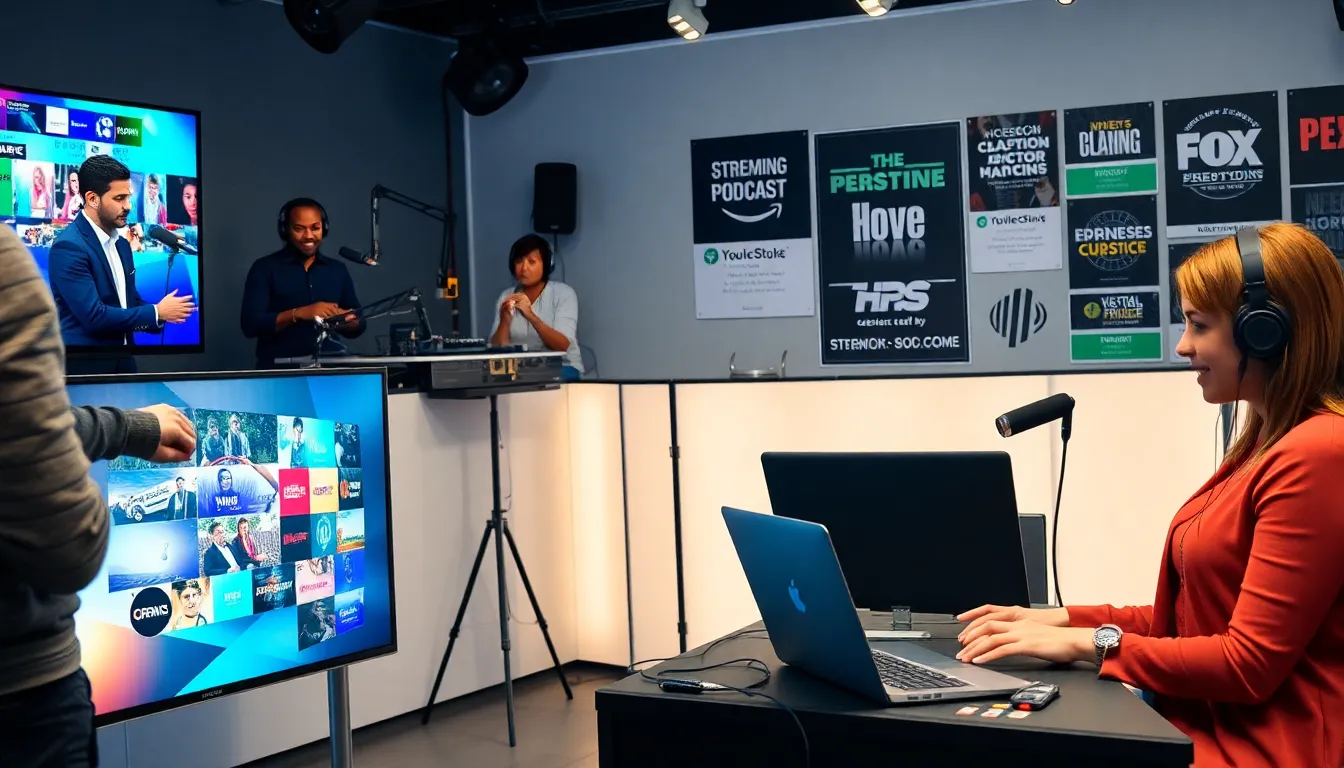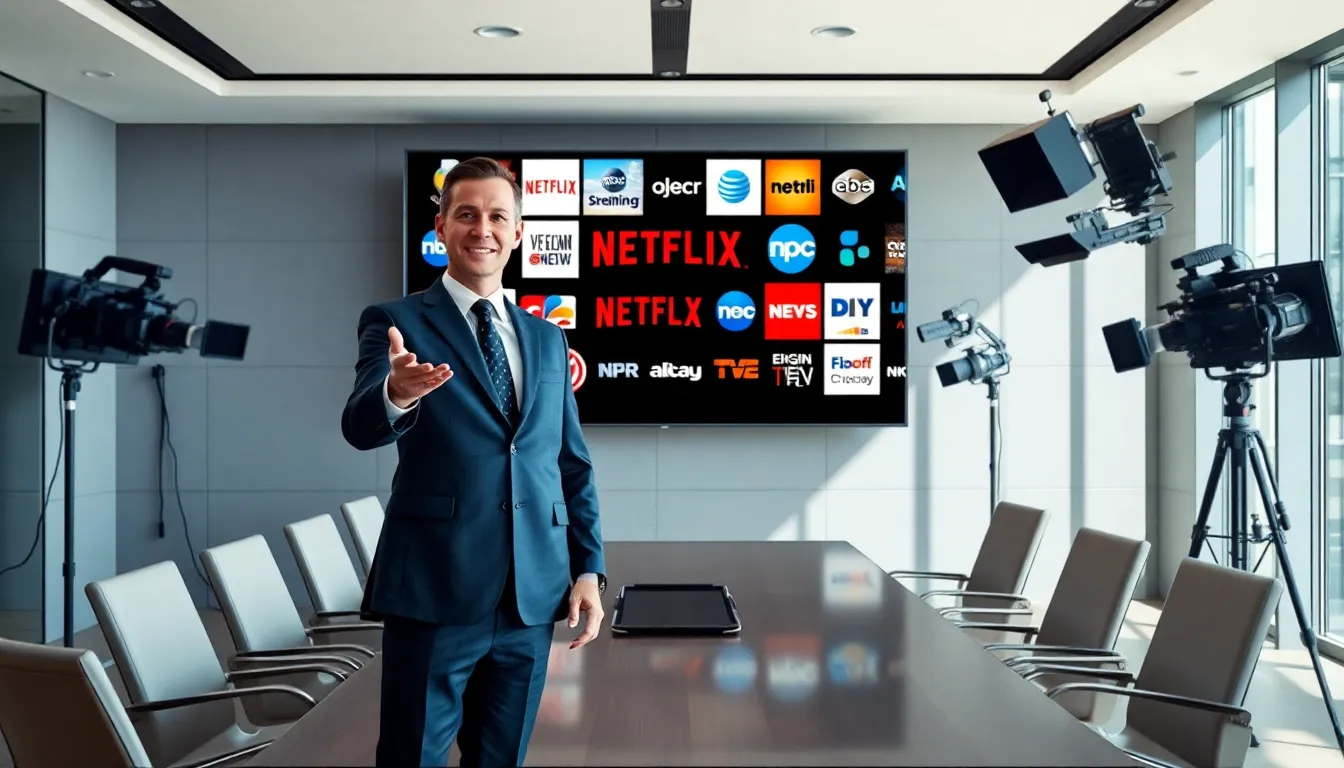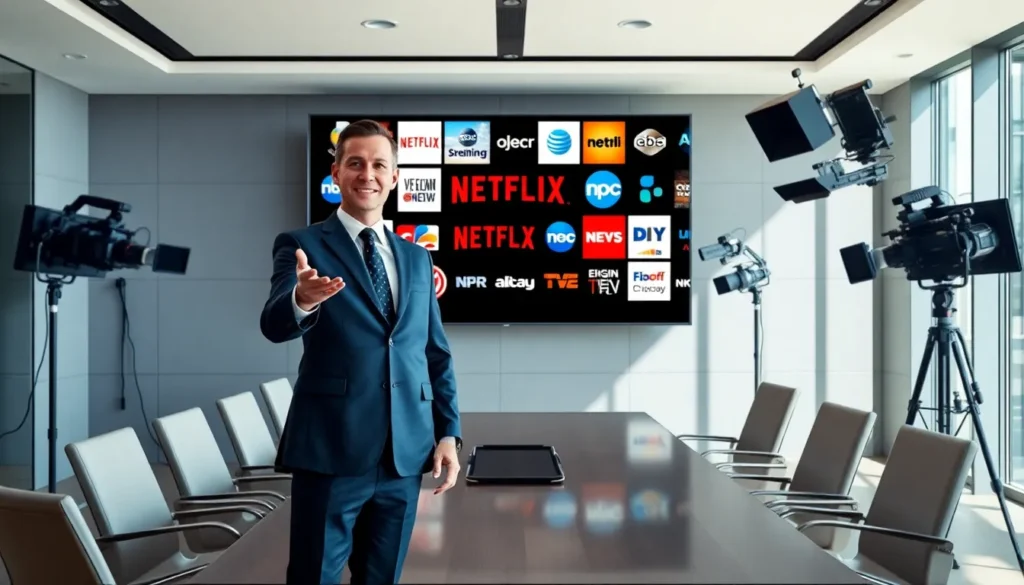Table of Contents
ToggleBroadcast media is everywhere, soaking up our attention like a sponge. From early morning news to late-night talk shows, it’s the backdrop of our daily lives. But what exactly falls under this vast umbrella? Buckle up, as we dig into the captivating world of broadcast media examples that keep us informed, entertained, and sometimes scratching our heads in wonder.
Types of Broadcast Media

Broadcast media encompasses several formats, each with its unique flair. The primary types include:
- Television: Often considered the king of broadcast media, TV has a way of bringing stories to life with visuals and sound.
- Radio: The original wireless communication that provides a platform for music, news, and talk shows.
- Online Streaming: A relatively new player, it allows content to be consumed on-demand, keeping pace with technology’s rapid evolution.
- Podcasts and Digital Audio: These are the on-the-go versions of radio, perfect for commutes or workouts.
Each type offers its distinctive vibe, catering to various tastes and preferences.
Television Broadcasting
Television broadcasting revolutionized how people consume media. With the ability to combine visuals with sound, it captivates audiences like no other medium. Think about it: 85% of U.S. households have a TV, making television a powerful vessel for advertisers and storytellers alike.
Within TV broadcasting, viewers can find:
Major Networks
ABC, NBC, CBS, and FOX dominate the airwaves, each offering a variety of programming from news to sports and dramas. They capture events as they happen, providing a shared experience.
Cable Channels
From HBO to MTV, cable offers specialized content aimed at specific demographics, tapping into niche interests.
Local Broadcasts
Local stations keep communities informed about regional happenings, blending national broadcasts with local flavor.
Television continues to evolve, with streaming services entering the mix, but its impact remains undeniable.
Radio Broadcasting
Radio broadcasting may seem like a relic in the digital age, but it thrives on simplicity and accessibility. Whether you are stuck in traffic or enjoying a morning jog, radio connects people with their favorite tunes, news, and talk shows. It’s estimated that around 90% of Americans listen to the radio each week.
AM vs. FM
AM stations often feature talk shows, sports, and news, while FM stations are mostly about music. Each serves a different purpose, catering to diverse audience preferences.
Internet Radio
In recent years, internet radio has emerged, allowing listeners to enjoy specific genres, playlists, and even live broadcasts from stations worldwide. Think about platforms like Pandora and Spotify, which blend traditional radio with on-demand services.
Radio remains a robust platform, finding new life in today’s multitasking world.
Online Streaming Services
Online streaming services have transformed the broadcasting landscape drastically. Gone are the days of waiting for a scheduled airing. With platforms like Netflix, Hulu, and Amazon Prime Video, viewers can binge-watch series and movies at their own pace, any time they like.
The Rise of Streaming
Streaming services have essentially dethroned traditional broadcasting for many, allowing for:
- Original Content: Unique series and films not found elsewhere.
- User Control: Viewers can pause, rewind, or skip, grabbing back their time.
- Global Reach: Content isn’t limited by geographical boundaries, making it accessible to a wider audience.
Though streaming poses challenges for traditional broadcasters, it also fuels innovation in storytelling and audience engagement.
Podcasts and Digital Audio
Podcasts have exploded in popularity, offering on-demand audio content for everyone, from deep dives in history to light-hearted banter in comedy. With over 400 million podcast listeners expected by 2024, they are changing the way we consume stories.
A Versatile Format
Podcasts can cover a spectrum of topics, allowing hosts to connect with their audience in a uniquely personal way. Whether people are in their cars, at the gym, or unwinding at home, podcasts fit seamlessly into any lifestyle.
Monetization and Growth
As podcasting grows, so does its revenue potential through sponsorships and advertisements, creating opportunities for creators to thrive.
Podcasts aren’t just a trend: they’re a mainstay in the media landscape, inviting listeners to engage deeply without the constraints of visual media.
Local vs. National Broadcasts
Broadcast media can be categorized into local and national broadcasts, each serving different functions and audiences.
Local broadcasts provide relevant news and events tailored to a specific area. They foster community spirit and keep residents informed about what’s happening around them. In contrast, national broadcasts focus on broader issues affecting the country as a whole, creating a shared understanding among the populace.
The Importance of Both
While national broadcasters often set the agenda with larger stories, local stations have their finger on the pulse of community concerns. Both are essential to inform, educate, and entertain audiences, highlighting the diverse world we live in.
The Impact of Broadcast Media
Broadcast media shapes public perception, opinions, and culture in profound ways. It plays a pivotal role in:
- Informing the Public: Delivering news and current affairs, it keeps citizens aware of local and global events.
- Cultural Exchange: By showcasing various cultures, values, and ideas, it promotes understanding and empathy.
- Influencing Behavior: Advertisers use these platforms to sway consumer behavior effectively, creating trends and shaping lifestyles.
Broadcast media isn’t just a source of entertainment: it serves as a critical tool for social engagement, public discourse, and community building.




